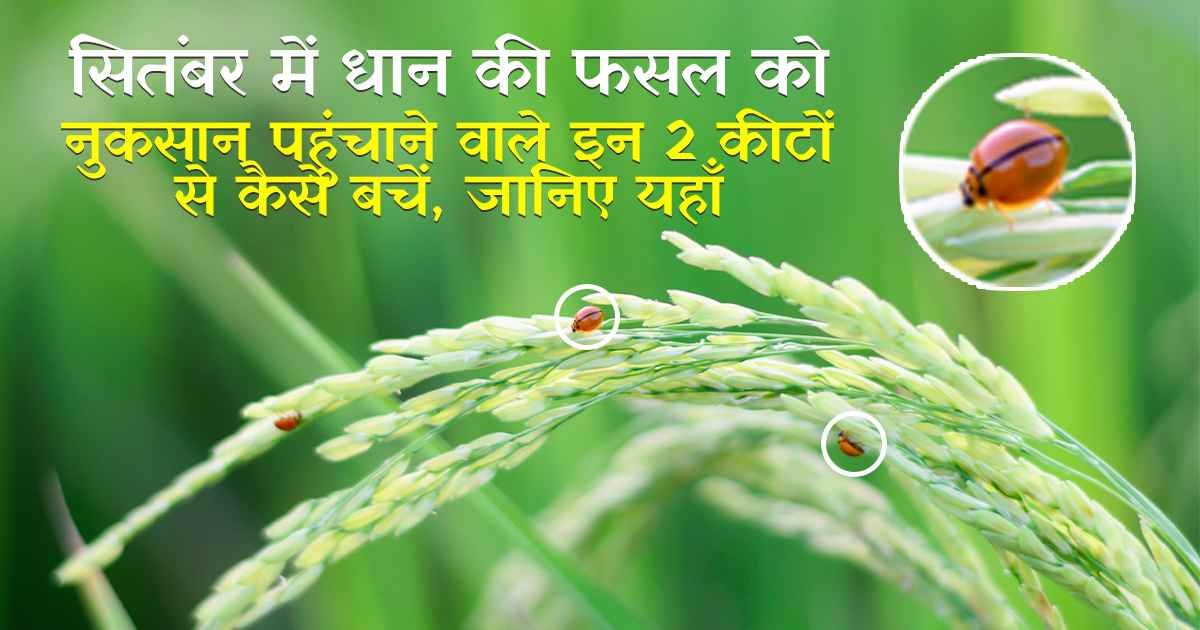By khetivyapar
Posted: 09 Sep, 2024 12:00 AM IST Updated Wed, 11 Sep 2024 11:23 AM IST
Paddy, a crucial Kharif crop, is considered a lifeline for farmers both economically and socially. This year, paddy cultivation has expanded to over 4.08 million hectares, an increase of approximately 1.5 million hectares compared to last year. Despite the promising yield, it is essential to focus on crop protection, particularly against pests and diseases.
September, as paddy crops begin the ear development stage, they become vulnerable to several damaging pests and diseases. Farmers must regularly monitor their fields and take immediate preventive measures upon noticing any signs of pests or diseases.
Stem Borer Control:
The stem borer poses a significant threat to paddy crops grown in dry and elevated areas. This pest damages the paddy stems, causing the ears to dry out and fall off, potentially leading to up to 100% crop loss.
Preventive Measures Against Stem Borer:
- Install 5-6 pheromone traps per acre.
- Apply Trichogramma japonicum (5 cc) three times a week.
- In cases of severe infestation, use Cartap Hydrochloride 4G or Fipronil 0.3G at 4 kilograms per acre, or spray Chlorpyrifos 20 EC or Cartap Hydrochloride 50 SP at 1 milliliter per liter of water.
Protection from Stink Bugs:
During the milk stage of paddy ears, stink bugs can damage the plants by sucking sap, leading to brown spots on the grains and hollowing them out.
Preventive Measures Against Stink Bugs:
- Regularly inspect fields and clear grass on bunds.
- When pest numbers reach 5 per bunch, spray Methyl Parathion 5% or Chlorpyrifos 5%.
- At the onset of ear development, spray Chlorpyrifos 20 EC or Oxydemeton-methyl 20 EC at 1 liter per acre.
General Crop Protection Tips:
- Regularly monitor all stages of the crop in September and conduct preventive spraying at the first signs of pests or diseases.
- Use urea in the required amounts only.
- Apply pesticides only when economically justified for pest control.
- Spray pesticides in the morning or evening, and refrain from application if rain is expected.
- Avoid pesticide application during the ear development stage if growing paddy for export, to prevent residue on the grains.
Following these guidelines will help farmers protect their paddy crops from significant pest and disease-related damage.
